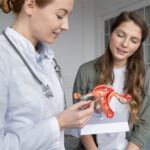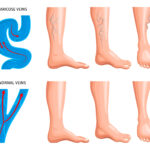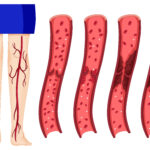The blockage and narrowing of the arteries happen because of buildups of fatty plaque in the arteries, known as peripheral artery disease. This condition is most common in the lower extremities or legs but can also be found in other blood vessels. There are several clinical manifestations of peripheral artery disease that an individual should focus on. This article will dig into the significant symptoms of Peripheral Arterial Disease.
Clinical Manifestations of PAD
Different people have different stories about their experience with PAD; some experience mild symptoms, while others experience severe symptoms. Every 1 in 4 people experiencing PAD is known to experience similar symptoms for this condition. Around 50% of the people suffering from peripheral artery disease experience nontypical symptoms, and 1 out of 5 people do not report any symptoms at all.
Irrespective of the symptoms being experienced, people with PAD share the same risk for cardiovascular disease. If PAD is not treated, patients will suffer from sores, loss of limbs, infections, etc.
As mentioned, the symptoms of PAD will vary, but here are some common symptoms:
- Pain and cramping is a symptom that is known to occur before any other symptom. The aching and heaviness of the legs, when you walk or climb up a staircase is where it all begins. It may go away with resting a little and is called intermittent claudication. The pain is experienced in the calf, thigh, buttocks, and foot.
- The toenails will stop growing, and so will the leg hair.
- You may feel that the skin of your feet is cold; one foot will feel colder compared to the other.
- Redness and color changes may occur, and your leg and feet may become pale, blue, and discolored.
- You may feel off-balance because of leg weakness and numbness in the leg. This will make walking uncomfortable.
- A feeling of pins and needles will be experienced in your foot and leg area.
- You may feel pain in your leg and foot even while resting; this happens in severe PAD and is called critical limb ischemia.
- You may experience skin infections very often.
- Sores will develop on your feet and leg; the wounds and sores will heal very slowly or, in some cases, might not heal. This way, the sores will get infected too.
Peripheral Arterial Disease
If you don’t get your peripheral artery disease treated, you may have to remove a part of your leg and foot. This is amputation and especially happens to people with diabetes, as you know that your circulatory system is an interconnected system of your body. The impact of this disease may get extended beyond the affected area.
Risk factors
If we talk about the risk factors for peripheral artery disease, tobacco tops the list. It is common among 80% of the people who smoke. Tobacco is known to increase the risks by 400% and brings the pad symptoms even before they should appear, say 10 years early. Other risk factors include:
- Diabetes
- Age above 50
- Family history
- Hypertension (high blood pressure)
- Hyperlipidemia (high cholesterol)
- Obesity
- Blood clotting disorder
- Kidney diseases
Studies have found that peripheral artery disease can be reversed with the appropriate control of blood pressure and cholesterol and exercising. Once diagnosed, lifestyle changes and treatment can help stop PAD from worsening.




